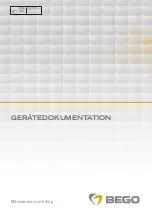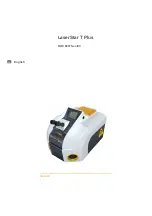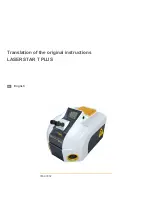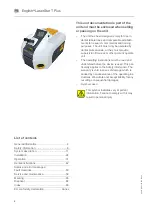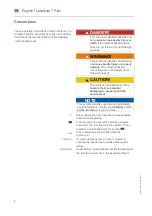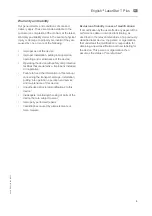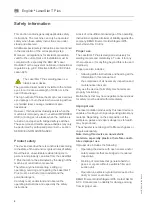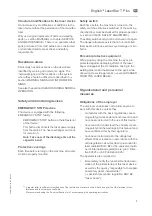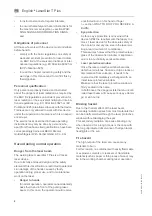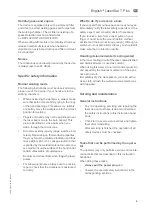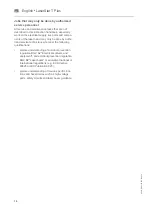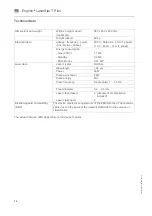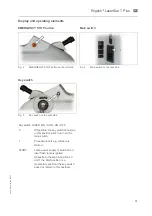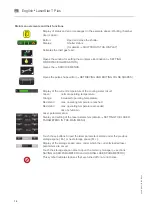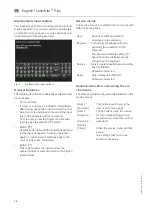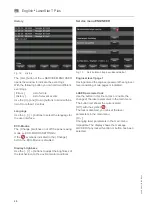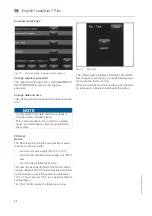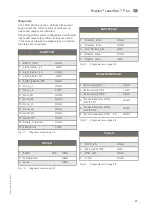
8
860
76
D
B
-en/
03
35
5.0
00
032
English
⋅
LaserStar T Plus
en
•
to instruct personnel at regular intervals,
•
to ensure that safety and hazard instructions for
the machine remain legible (
→
section WAR-
NING SIGNS AND INFORMATION SIGNS,
and
Obilgations of personnel
All those who work with the device must undertake
beforehand to
•
comply with the basic regulations on safety at
work and accident prevention for laser radiati-
on, BGV B2, or the equivalent national or inter-
national regulations (e.g. EC Directive 60825 or
IEC Publication 825);
•
to read the chapter concerning safety and the
warnings in this manual and to confirm this by
their signature.
Personnel qualification
Only personnel properly trained and instructed
about the dangers of laser radiation as required by
the BGV B2 regulations on accident prevention for
laser radiation or the equivalent national or interna-
tional regulations (e.g. EC Directive 60825 or IEC
Publication 825) are allowed to work with the device.
Trainees are only allowed to work with this device
under the supervision of someone who is an experi-
enced user.
The service tasks described in these operating
instructions may only be done by persons who,
apart from the above-cited qualifications, have been
correspondingly trained at BEGO Bremer
Goldschlägerei Wilh. Herbst GmbH & Co. KG.
Hazard during normal operation
Danger from the laser beam
The welding laser LaserStar T Plus is a Class 4
laser device.
Due to its fully enclosed design and the safety
elements this classification is restricted to potential
skin damage of the hands caused by faulty
operation during proper use, and to maintenance
work on the laser.
•
Danger to hands
In normal operation, operators can accidentally
pass their hand in front of the pulsing laser
beam. In this case, the operator would receive
a restricted burn on his hand or finger
(
→
section WHAT TO DO IF YOU RECEIVE A
BURN).
•
Eye protection
As far as eye protection is concerned, this
device fulfills the requirements that apply to a
class 1 laser device for the absolute safety of
the operator and anyone else in the laser wor-
king area (document of compliance).
This assumes however that the protective laser
glass of the observation window is kept clean
and is in a technically serviceable state.
•
Laser protective window
Once the laser protective window becomes
defective (scratches, fractures, chips, cracks or
discoloration from solvents), it needs to be
covered and immediately exchanged with an
intact laser protective window.
Make sure that the laser protective window is
firmly seated in the frame.
In both cases, the danger exists that an uncont-
rolled laser beam will cause serious eye dama-
ge or skin burns.
Blinding hazard
Due to the thermal effect of the laser beam,
secondary radiation arises from most materials that
can be briefly watched through the laser protective
window without damaging the eyes.
This secondary radiation can cause blinding only
when observed for a long time as is the case with
the long unprotected observance of halogen lamps,
headlights or the sun.
Fire hazard
The high output of the laser can cause many
materials to burn.
For this reason, no containers with easily flammable
or explosive solvents or cleansers or flammable
material (such as paper or thin pieces of wood) may
be in the working chamber during laser operation.

